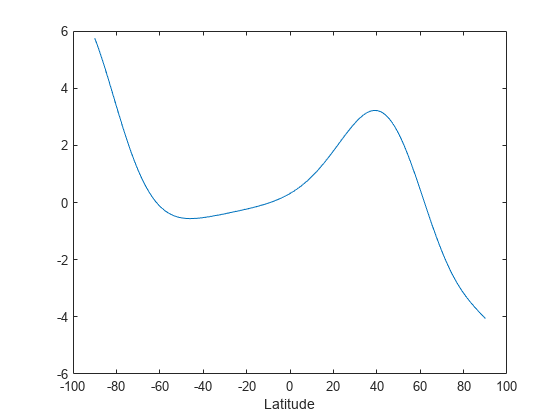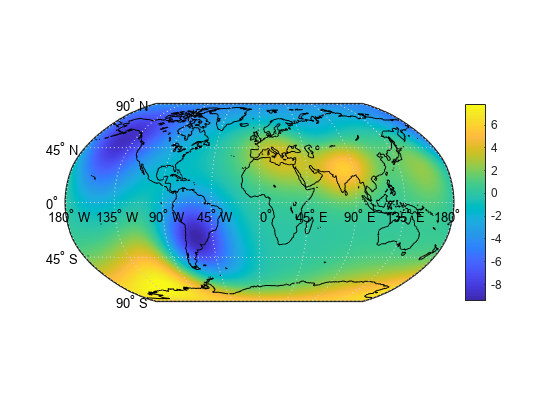geopeaks
Generate synthetic data set on sphere
Description
Z = geopeaks(lat,lon)Z.
The function is continuous and smooth at all points, including the
poles. Reminiscent of the MATLAB peaks function, geopeaks undulates
gently between values of -10 and 8,
with about a half dozen local extrema.
Z = geopeaks(___,spheroid)spheroid and the GeographicCRS
property of R is not empty, then geopeaks
uses the spheroid contained in the Spheroid property of the
geocrs object in the GeographicCRS
property of R.

